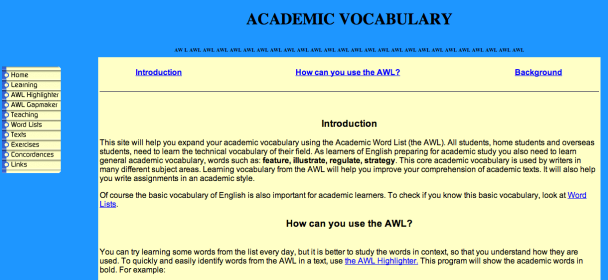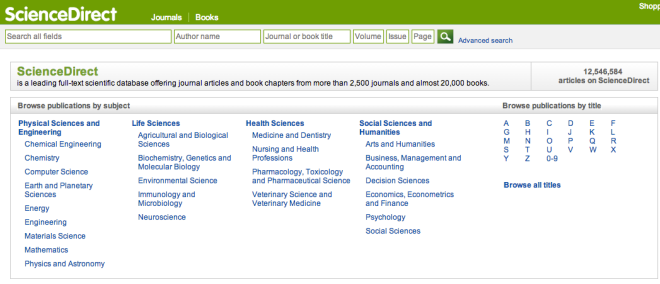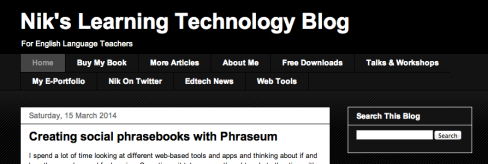Following my recently begun and ongoing foray into teaching IELTS, I thought I would revisit my Top 10’s in ELT series and offer up a list of the resources that I have found most helpful in my IELTS journey so far. The focus of this Top 10* post will be Academic IELTS, as I haven’t taught General IELTS thus far. Of course, the listening and speaking components are the same, so some aspects will be transferable. Click on any picture to be taken to a description of the source (books) or the source itself (websites).
*The more astute amongst you will notice that this Top 10 list is only 9 – strong… it’s deliberate! No. 10 is up for discussion: please do comment on this post and tell me the resource you think should fill this space… (And for further IELTS-related links, see my Useful IELTS Websites post!)
Books
1. Vocabulary for IELTS Advanced
Written by Pauline Cullen and published by Cambridge University Press, this is a book I initially came across while working on the pre-sessional at Sheffield University last summer. I have since used it with my IELTS students here in Palermo, and found it to be a great resource. It cleverly combines a focus on and practice of each of the four IELTS components with useful, relevant vocabulary input and practice. It is also packed with ‘Test Tips’ which are act as a useful reminder of what to emphasise to students.
2. Complete IELTS (Bands 5 – 6.5)
Also published by Cambridge University Press (unfortunately I am not on commission…), Complete IELTS was written by Guy Brook-Hart and Vanessa Jakeman. There are similar books available for other bands, but this is the one I have been using. What do I like about this student book? It’s user-friendly, it integrates the grammar and vocabulary with focus on the different elements of the exam. It also has a really useful Writing Reference at the back of the book, which breaks down all the different task types that students might meet in Writing Part 1, with clear information, tips and models to help them face these different task types, and highlights the different question types that students might meet in Part 2, again with information, tips and sample answers to guide them.
3. Ready for IELTS
Ready for IELTS is published by Macmillan and written by Sam McCarter. This has been another valuable resource for me, for the following reasons: It contains four ‘Ready for…’ sections, one for each exam component, which offer a guided discovery approach to IELTS reading, writing, speaking and listening, and is also full of useful tips (‘What to expect in the exam‘, ‘How to go about it‘ ‘Don’t forget‘ boxes can be found throughout). It contains plenty of test practice opportunities but rather than being empty practice, the book makes a real effort to help students improve, rather than hoping sheer repetition will get them there. Finally, and perhaps a little shallow, I also like how colourful and visually appealing it is!
4. IELTS Resource Pack
This fantastic pack of activities and games, written by Jan Marks, is very useful for livening up IELTS prep classes while at the same time ensuring that important information is thoroughly hammered home. Like the earlier-mentioned Vocabulary for IELTS Advanced, I first met this book during the summer, as it was one of our resource books for the entrance exam preparation component of the pre-sessional, and found it very useful. Depending on the length of your sessions, these activities can be used independently or to supplement a given lesson that you are doing.
Websites:
5. TEFL Reflections
For useful, practical information that will help you to help yourself ( 🙂 ) your students get to grips with IELTS writing, part 1 AND part 2, the best thing you can do is look at these posts written by Marek Kiczkowiak and Robert Wiilliam:
IELTS Writing Part 1
- IELTS Writing: Task 1 Assessment Criteria and its implications for teaching
- IELTS Writing: The Dos and Don’ts of Part 1
- IELTS Writing: Checklist for IELTS Part 1
IELTS Writing Part 2
They have also taken on the IELTS Speaking exam, for example:
IELTS Speaking
Marek and Robert are both IELTS examiners and have taken the time to share some of their IELTS expertise with the rest of us. I, for one, am grateful! 🙂
6. British Council Learn English IELTS
Like the rest of the British Council Learn English site, this is an invaluable source of material for students and teachers alike. Practice materials and advice that you can point your students towards or have a perusal of, yourself!
7. British Council Take IELTS Teacher Resources
More quality materials from the British Council, this time aimed at teachers of IELTS, very helpful for guidance in making IELTS come alive in the classroom.
8. One stop English IELTS page
This page is part of the collection of resources for teachers gathered under the name ‘One stop English’. Amongst all the resources for different types of English (e.g. Business English, English for Children etc.) there is a section dedicated to exam preparation within which can be found the IELTS page. The material is divided up into categories, one for each exam component, one for strategies, one for exam orientation and a nifty little selection of activities requiring ‘Minimal Resources’.
9. IELTS.org and The Official IELTS Facebook Page
A list of IELTS resources wouldn’t be complete without a tipping of the hat to IELTS.org, home of IELTS on the web, and the Facebook page associated with it. IELTS.org has sections dedicated to test-takers, organisations, researchers and teachers. The Official IELTS Facebook Page publishes regular quiz questions relating to the exam and language typically used in the exam, with the answers following 24hrs later. If your students use Facebook, it’s worth pointing them at the Facebook page, and certainly they can benefit from looking at the test-takers section of IELTS.org.
I hope you find this list useful. And now, I look forward to hearing your suggestions for no. 10!
Edits:
- First potential contender for no. 10 has been put forward by Jonny Ingham and is: The IH London Blog , which has a section dedicated to exam advice with a good example post from this collection being How to prepare for the IELTS writing task







































































































